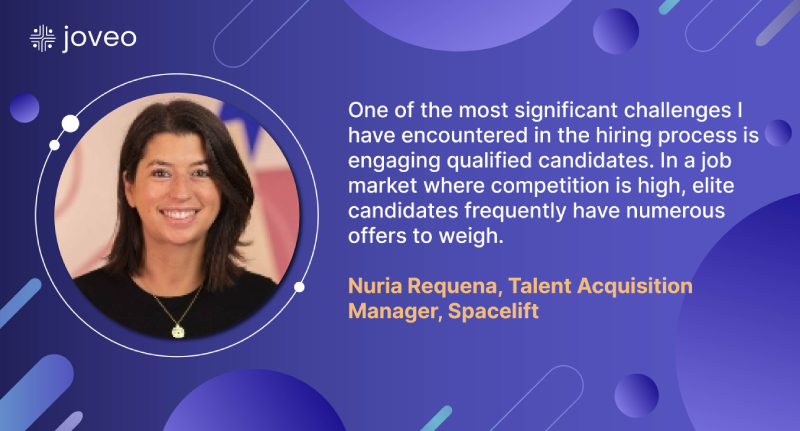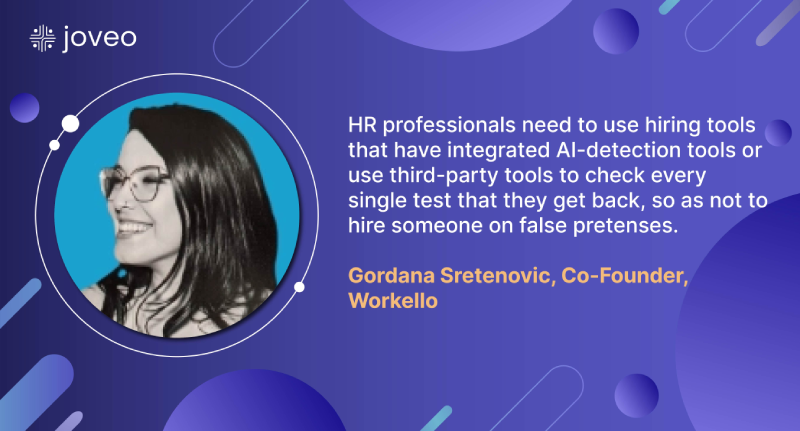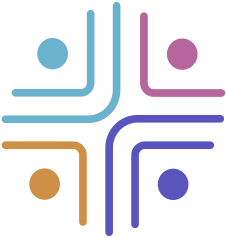In this article, thirteen seasoned professionals, ranging from HR managers to company founders, share their unique insights into the significant recruitment challenges they’ve encountered during the hiring process. From grappling with the complexities of interviewing graduate-level candidates to the task of simplifying complex job descriptions, dive in to discover the interesting discoveries these professionals have found and improve your hiring process.
Interviewing Graduate-Level Candidates
Interviewing mid-senior level staff is straightforward. They have enough experience to discuss during the interview, and they have all had sufficient experience with interviews to perform their best.
Most graduates, realistically, haven’t done anything worth discussing in an interview, so interview skills largely determine their performance. It’s clear when someone has undergone training or preparation for an interview, as they always use the “context, action, result” answer format or some derivative.
Consequently, the predictive validity of our graduate-level interviews is likely substantially lower than in more senior hires, being mediated almost entirely by the quality of their career support.
To combat this, we incorporate a range of assessments, including psychometrics, case-study interviews, and assessment centers, to identify high-potential candidates. As a result, even if the interview stage fails to add value, other stages pick up the slack.
Chloe Yarwood, HR Manager, Test Partnership
Keeping Up with Emerging Technologies
One challenge we’ve encountered is in relation to emerging technologies and how they align with niche roles.
For example, we must ensure that software-specific requirements are relevant at the time of writing, and we must always ensure that we have the right information and required technical skill sets in relation to either software growth or emerging tech.
This is something we monitor closely.
Wendy Makinson, HR Manager, Joloda Hydraroll
Engaging Qualified Candidates in a Competitive Market
One of the most significant challenges I have encountered in the hiring process is engaging qualified candidates. In a job market where competition is high, elite candidates frequently have numerous offers to weigh.
This can make a company’s engagement efforts less noticeable. This difficulty has prompted us to reevaluate our methods of interacting with potential hires. We’ve transitioned towards customizing our communication, centering on the benefits we can extend to candidates instead of their potential contributions to us.
We’ve also acknowledged the significance of cultivating a robust employer brand to draw in and keep talent. This challenge has reshaped our recruitment strategy, leading to a more personalized and candidate-focused approach.
Nuria Requena, Talent Acquisition Manager, Spacelift

Hiring During Rapid Expansion
I would say that hiring alongside rapid expansion is incredibly challenging. It’s why I always go back to the point that you need to have your processes in place to preempt a spike in growth and hiring requirements, rather than trying to get them in place once the growth spike is already occurring.
Tracey Beveridge, HR Director, Personnel Checks
Addressing Unconscious Bias in Hiring
One of the most significant challenges I’ve encountered in the hiring process has been addressing unconscious bias. It’s an insidious issue because, by its very nature, it’s not immediately apparent. I remember a time when our recruitment seemed to follow a predictable pattern, unintentionally favoring certain demographics. On deeper inspection, I realized that this invisible bias was casting a shadow over our diversity objectives.
Our recruitment team, unintentionally, was leaning towards candidates displaying extroverted, outgoing personalities, inadvertently overlooking potentially valuable introverted individuals.
To overcome this, we had unconscious-bias training sessions for our hiring team. This led to a revelation of the unconscious patterns and assumptions that were influencing our decisions. We then implemented a more structured and objective hiring process, with steps like “blind” resume screenings, standardized interview questions, and diverse interview panels.
Shirley Borg, Head of Human Resources, Energy Casino
Navigating Post-COVID Salary Expectations
Currently, as the Director of Operations for an HR consulting firm managing RPO for clients, the impact of the post-COVID hiring boom, the Great Resignation, and the subsequent influx of layoffs are evident.
Companies, in an attempt to attract talent, disregarded their salary structures and paid high amounts (in salary and bonus) to fill their vacant roles. Given it was a candidates’ market, many candidates demanded large salaries, and companies were quick to comply.
Now, those same individuals who were laid off due to unsustainable salaries are job hunting in an employers’ market, still expecting those inflated salaries or higher!
The challenge lies in dealing with candidates with unrealistic salary expectations and employers panicking over the fact that they want the talent, but it would require them to overspend.
Eric Mochnacz, Director of Operations, Red Clover
Handling Personal Issues During Interviews
As the CEO of Redfish Technology, a recruiting firm specializing in the tech sector, I recently had an experience that might be insightful. I was close to landing a coveted placement for a well-qualified candidate when I got the news that the hiring manager wasn’t impressed with their latest interview. On paper and in emails, this applicant looked perfect, so I reached out to see what went wrong.
It turned out that my client had received some devastating news about a family member the morning of the interview. Determined to continue anyway, they showed up but found themselves unable to focus.
They were certain they’d lost the role, but I encouraged them to reach out and explain. While a bad interview can feel like the end of the world, employers understand that everyone has off days. Don’t be afraid to explain the circumstances and ask for a second chance to impress.
Rob Reeves, CEO and President, Redfish Technology
Dealing with AI-Generated Applications
I’ve recently run a hiring cycle for new content writers. The first thing I noticed is that 90% of cover letters were generated with ChatGPT. This wasn’t a deal breaker for me because I understand that candidates apply for numerous jobs and don’t have time to write so many cover letters.
However, the main issue became apparent after I sent the standard pre-hire assessments to my candidates. So far, over 15% of candidates used ChatGPT to generate their test articles. They all sounded the same and didn’t allow me to gauge the actual writing skills of my candidates.
HR professionals need to use hiring tools that have integrated AI-detection tools or use third-party tools to check every single test that they get back, so as not to hire someone on false pretenses.
Gordana Sretenovic, Co-Founder, Workello

Verifying Truthfulness on Resumes
A big problem that I’ve seen when hiring is checking if what’s written on a candidate’s resume is true. Sometimes, people don’t tell the truth about their past jobs or skills. There were times when I found out during the interview that the person’s real skills didn’t match what they wrote on their resume. This is a tough issue. It wastes time, and we need to be sure that the person we hire is really able to do what they say they can.
Martin Potocki, CEO, Jobera
Managing Hesitant Applicants in a Strong Market
As the founder and managing partner at Vetted, a recruiting firm serving growth-stage tech companies in Greater Boston and beyond, I can share that a strong job market means plenty of choices for candidates, which is usually considered a good thing.
However, it can also cause unexpected heartache for hesitant applicants. The more options they have, the more their distress around making a decision grows, and that stress inevitably leads to rushed, put-off, or wrong decisions.
I’ve seen it happen often, particularly among logic-driven tech workers convinced they can analyze their way to a perfect choice.
When faced with an applicant like this, I take a little extra time, in the beginning, to ascertain exactly what it is they want in a new role. Then, I match those parameters carefully, knowing that in these cases, a range of potential placements may only frustrate us both.
Get insight into the latest talent sourcing and recruitment advertising benchmarks across 16 of the top professions in the US.
Recruitment Benchmarks for Top 16 Professions!
Overcoming Delays in the Hiring Process
The average time to hire has been increasing over the past few years, and this has been a major challenge for both our team and the companies we work with—in fact, it’s one of the most common reasons cited by new clients as to why they’ve decided to partner with a recruitment firm.
There are many things causing these delays. The primary cause, in my assessment, is the ongoing talent shortage in many industries, which makes simply finding qualified candidates a longer, more challenging process than in the past.
This can also lead to an unfortunate cycle where hiring delays lead to candidates dropping out of the process, thus causing further delays in hiring the right candidate. Maintaining a strong network of both active job seekers and passive candidates has helped us reduce delays, but it remains one of the most significant challenges for our team.
Matt Erhard, Managing Partner, Summit Search Group
Shortlisting Candidates from a Large Pool
Shortlisting candidates based on their skill profiles matching the job posting has always been challenging for me in the hiring process. This is because dealing with and screening the overwhelming response from the candidates is an arduous task, as it relates to evaluating their skills, qualifications, and experiences.
One can’t risk skipping qualified candidates while shortlisting from a bunch of candidates. You need to put time and effort into choosing the best among many and avoid any hasty decision, which can negatively impact your HR goals and also compromise the hiring process costs.
Lou Reverchuk, Co-Founder and CEO, EchoGlobal
Simplifying Complex Job Descriptions
As an executive recruiter, one of the biggest challenges we encounter is when a client gives us a job description. The majority of the time, the job description is just copied and pasted from somewhere else and then customized through addition. This is a terrible practice, and we highly recommend against it.
Even worse, once the client sends it to us, the job description is way too long and almost impossible to interview and vet against because there are too many “must-haves” and “nice-to-haves.”
We have a very strategic way to help coach our clients by simplifying their job descriptions to include very specific success outcomes, but it’s a significant challenge we deal with initially with almost every client.
Max Hansen, CEO and Co-Founder, Y Scouts
What if I told you that you could have access to all of the world’s best talent right at your fingertips?
Yes, we are talking about The Only Transparent Programmatic Job Advertising Platform – MOJO Pro!
Joveo’s programmatic solution, MOJO Pro, will revolutionize your recruitment process. With the power of our AI-driven approach and campaign automation, you can spend with precision on sources that deliver. Get your job ads in front of the right people – at the right place and time, for the right price!
What does that mean?
Well, our clients see 33%+ more great-fit candidates, spend 25%+ less on every application, and track their performance across all sources – job sites, search engines, or social channels – with MOJO. Discover the power of our game-changing, end-to-end talent-sourcing platform.
See us in action to boost your company’s productivity. Follow us on Twitter and LinkedIn for more hiring insights!












